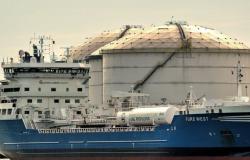E. Stonkute. China’s challenge to Europe
Sometimes it seems that more attention is currently being paid to monetary policy decisions than to the main drivers of economic growth – the quantitative and qualitative changes in supply and demand. We cannot forget that if the European Central Bank (ECB) lowers interest rates (sooner or later), it will not solve the economic problems of the European Union by itself. Of which the biggest headache is the demand for the production produced in the EU, the global competitiveness of that production, which requires innovation to ensure (hence the efficient ecosystem of innovation, ie talent and capital).
As early as 2023, the research and analysis unit “Economist Intelligence Unit” said that the recovery of the EU economy will depend on the recovery of the Chinese economy. Both still have their own problems, but there is one thing in common – geopolitical polarization, which leads to changes in the geographical directions of international trade and investment.
Even if both US and EU politicians have already recognized that “de-couple” from China is impossible, both the US and Germany are taking the path of “de-risking” (risk reduction), and China itself is taking measures to reduce risks. Such steps on both sides lead to the reorganization of previously established export markets, supply chains, increasing control over the supply of critical natural resources, changes in suppliers, changes in geographical directions of investment, attention to strategic sectors, innovation and defense.
The question is how much the EU economy is dependent on the Chinese economy? Let’s look at the interdependence of the EU’s international trade with China.
Even if the EU is not the world’s largest economy, it is the world’s largest exporter and importer. Its economy is more dependent on the export of goods and services than that of the US or China. In 2023, the US GDP was $27.3 trillion, China $17.7 trillion, and the EU $17.8 trillion. However, US and Chinese exports of goods and services are estimated to be in the range of 3-4 trillion dollars, while EU exports exceeded 9 trillion dollars (more than twice the amount of US or Chinese exports of goods and services). If the annual value of US exports of goods and services is about 12 percent. its GDP, that of China – 20 percent. GDP, and in the EU – about 40 percent. GDP.
Thus, the internal economic prosperity of the EU (the additional added value created turns into additional jobs created to meet domestic demand and new investments) depends to a large extent on exports and what happens in the export and import markets.
In 2023, China was the third (after the USA and the United Kingdom) largest EU goods export partner (exported 8.8 percent of total exports) and the largest goods import partner (imported 20.5 percent of total imports). The EU’s dependence on Chinese imports has grown consistently since 2000, when only about 7% of total goods imports were imports from China, and it consisted of less strategically important products (clothing, toys, furniture, etc.). Over time, the import structure of electronics, pharmaceutical materials and tools increased.
Those countries whose industry generates a larger share of the national economy are more dependent on Chinese imports. Such countries also include Germany, which in 2023 imported 18.4 percent from China. 43.5% of the EU imported and exported goods from China. of all its goods exports and it is the only EU country that generates a positive trade balance with China in the long term (from 2011, excluding 2022). In addition, many other EU member states provide their intermediate products to German manufacturers, who then export the final products and thus indirectly become dependent on the Chinese market (such as Estonia, Belgium, the Netherlands, Lithuania). In addition, Germany generates about a quarter of the total EU GDP, and exports of goods and services amount to about 50 percent. country’s GDP.
In addition to final product imports, the EU is increasingly dependent on intermediate products imported from China for its added value. The largest part of the added value created is dependent on imports of intermediate products from China in the metal, chemical, electronic and electrical equipment sectors. In addition, the EU imports about half of its critical natural resources from China.
Let’s go back to the question, is the EU’s economic recovery dependent on China? Obvious. Dependent. It is impossible to replace one of the world’s largest suppliers of intermediate products and final products in the short term. In the longer term, partial market diversifications to reduce strategic dependence are possible, but a complete replacement should not be expected. If anyone thinks that India could replace China in the EU, it won’t happen anytime soon (primarily due to India’s infrastructure deficiencies).
And for now, we cannot assume that if the diesel engine of the boat (German economy) works hard, then its lack of power will be fully compensated by hand rowing. (Also, the engine is currently being repackaged and part of it, in the form of foreign direct investment, is to be transferred to other countries, as more and more German companies intend to invest outside of Germany).
In 2023, German foreign direct investment in China amounted to 10.3 percent. of the country’s total overseas investment and was the largest share of investment in China since 2014. Large German companies are reducing their investments in Germany but continuing to invest in China. Investments in China by the four largest companies (Volkswagen, BMW, Daimler and BASF) account for about a third of all German foreign direct investment in China. About a third of all sales of the German automobile industry are also generated in the Chinese market.
As unpleasant as it is, we have to admit that the economic recovery of the EU still depends quite significantly on the economic cooperation between China and the EU.
The author of the comment is Eglė Stonkutė, economist-analyst of the Confederation of Lithuanian Industrialists.






